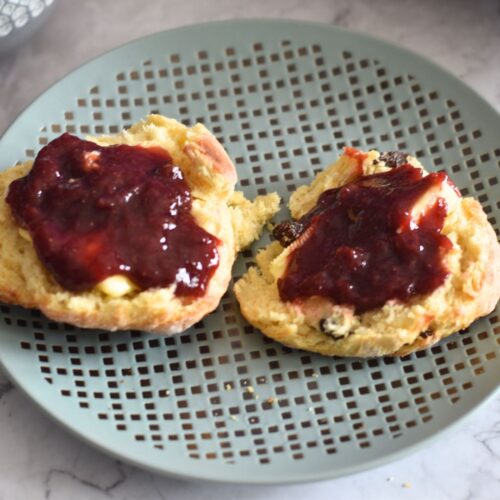
Irish Scones
Bake fresh Irish scones at home with this easy recipe. Enjoy light, buttery treats served with jam or cream, just like they do in Ireland.
Servings: 10 Scones
Ingredients
- 450 grams plain white flour
- 90 grams butter Cold, Frozen is best
- 2 small eggs
- pinch salt
- 25 grams castor sugar
- 2 teaspoons baking powder
- 225 ml milk
- Raisins/Sulatanas Optional
To glaze:
- Egg wash saved from egg and milk mix
- castor Sugar or Demerara sugar or coarse granulated sugar for coating the top of the scones
Instructions
- Preheat your oven to 446°F (230°C).
Making of Dough
- Sift flour, baking powder, sugar, and salt into a large bowl.450 grams plain white flour, 25 grams castor sugar, 2 teaspoons baking powder, pinch salt
- Grate the frozen butter with a grater directly into the flour mixture. Alternatively one can cut it with your fingers or a pastry cutter until the mixture looks like coarse breadcrumbs.90 grams butter
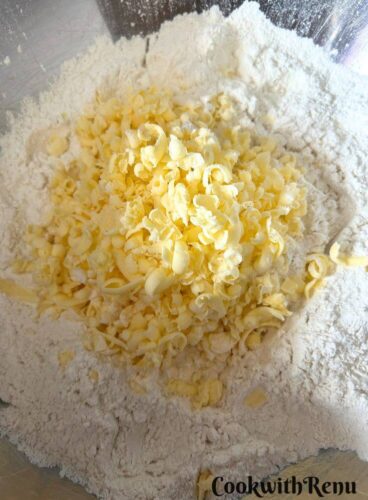
- Add raisins or currants, or sultanas if using. Lightly rub the butter and raisins into the flour mixture.Raisins/Sulatanas
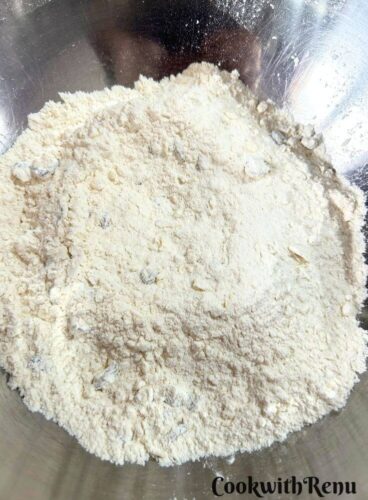
- In a small bowl, beat the eggs and add milk to it.2 small eggs, 225 ml milk
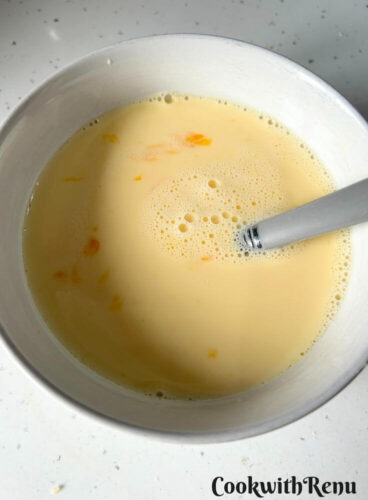
- Make a well in the center of the dry mix and pour in most of the milk mixture leaving a little aside.
- With your hand, in claw shape, mix it lightly. Just mix until it all combines. We need soft, shaggy dough.
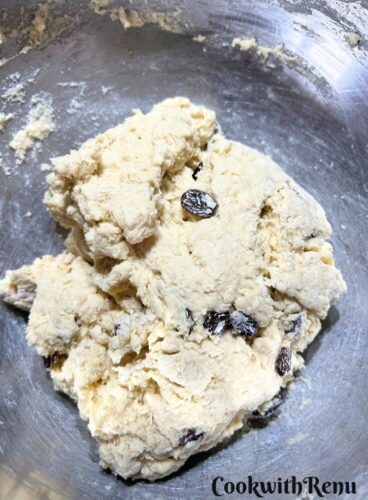
- If the dough appears dry, add more milk and egg mixture.
- Do not overmix as that will lead to hard scones.
Shape the dough
- Turn the dough out onto a floured surface. Pat it gently to about 1 to 1.25 inches thick. Don’t roll aggressively—too much handling toughens scones.
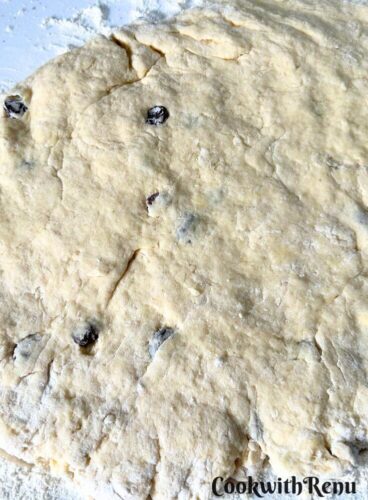
- Use a round cutter, dipping it in flour between cuts, and press down without twisting.
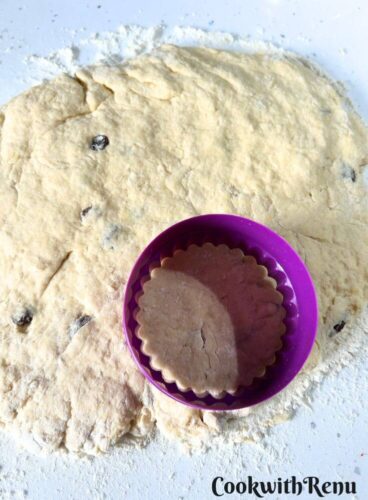
- Lay rounds on a parchment-lined baking sheet, spacing them an inch apart.
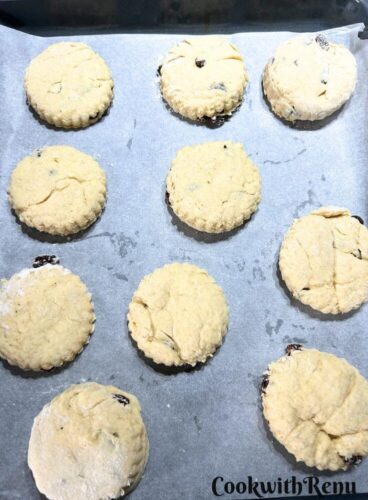
Top and bake
- Brush the tops with milk or a beaten egg for gloss. One can use the leftover milk mixture.Egg wash
- Dip the scone in sugar or sprinkle some sugar if you like a crunchy finish.castor Sugar or Demerara sugar or coarse granulated sugar for coating the top of the scones
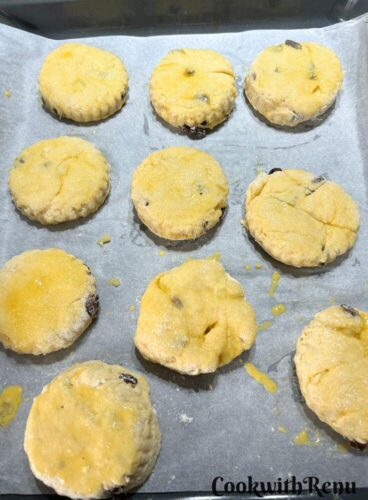
- Bake for 10-12 minutes, until golden. Let it cool in the baking tray for 5 minutes, then enjoy it warm
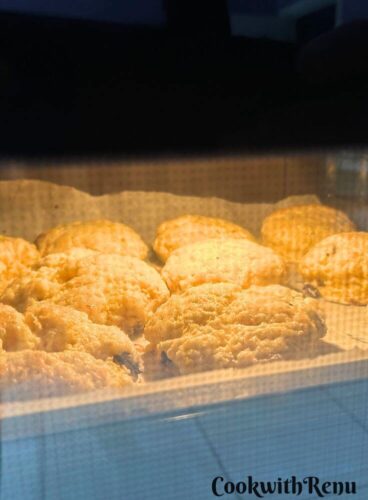
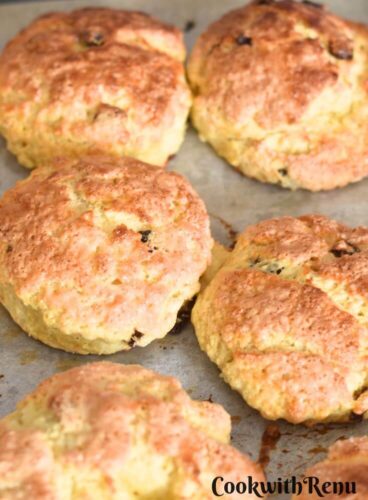
Notes
Tips for bakery-style results:
Measure everything for best consistency.
If your kitchen is warm, chill the cut scones for five minutes before baking.
For extra lightness, sift the flour twice.
Serve scones the same day—they’re best warm and fresh.
Measure everything for best consistency.
If your kitchen is warm, chill the cut scones for five minutes before baking.
For extra lightness, sift the flour twice.
Serve scones the same day—they’re best warm and fresh.
- Common Mistakes and How to Avoid Them
Even experienced bakers trip up with scones. Here’s what to watch for, and how to fix it:
Over-mixing the dough: This makes scones tough, not tender. Mix with a light hand, stopping as soon as everything comes together.
Melting the butter: When butter gets too soft, scones lose their flakiness. Always use cold butter, and work quickly. For best results freeze the butter.
Rolling too thin: Thin dough means flat, dry scones. Keep dough over an inch thick.
Cutting followed by twisting: Twisting the cutter seals the dough’s edges, keeping scones from rising. Press straight down, then lift.
Oven not hot enough: Scones need a burst of high heat. Bake at or above 400°F.
Leaving scones out too long before baking: The dough should go into the oven quickly, or the baking powder won’t do its work.
Quick reminder: Irish scones aren’t supposed to be ultra-sweet or crumbly like shortbread. A good batch is soft inside, with a crisp, golden crust.